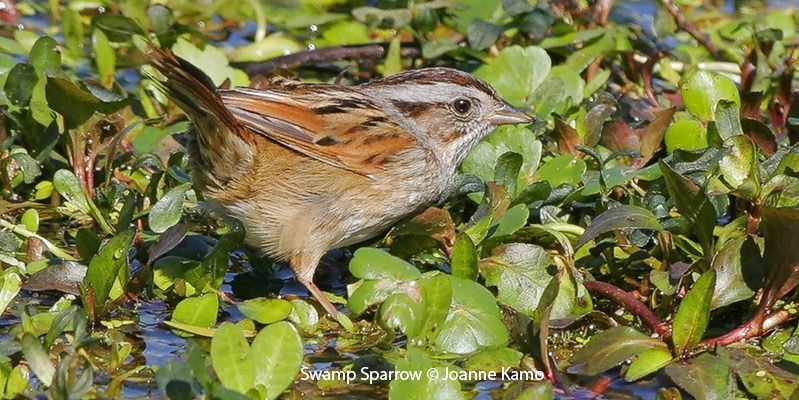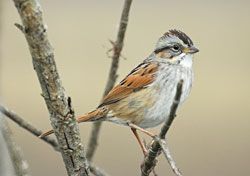
© Joseph Kennedy
Swamp Sparrow
Melospiza georgiana
Family: (Passerellidae) New World Sparrows
Preferred Habitat: Marshes and fields
Seasonal Occurrence: Abundant November through mid-April
Notes: Swamp Sparrows are one of the most common sparrows on the Upper Texas Coast, but their cryptic coloring in shades of rufous, gray, and tan can make them difficult to see. Swamp Sparrows prefer wetland habitats. They sometimes stick their heads underwater to catch aquatic invertebrates. The solid chestnut cap of adults acquires a central gray stripe in winter. First winter males have darker faces, and the white throat patch is not as evident.
Profile by Grace Yaros: Swamp Sparrows are medium-sized sparrows, handsomely colored in shades of red and gray. They are rusty reddish-brown above with coarse black streaks, and grayish underneath. They have a distinct black line that extends behind the eye, and a pale gray face that contrasts against their rusty brown cap. During the breeding season, their caps take on a brilliant rusty red color, becoming a slightly drabber brown during the winter. Important features to look for to separate them from other sparrows are their lack of distinct streaking below and bright rusty coloration in the wings and back. Their preference for wetlands is also a good clue.
Very aptly named, Swamp Sparrows breed in a variety of wetland habitats, including cattail marshes, boreal bogs, and wet meadows. Their breeding range extends from boreal wetlands in Canada south to brackish marshes of the mid-Atlantic United States. During the winter, they migrate south, and can be found in wetlands as far south as central Mexico. Though they are common in their preferred habitat, they can be rather shy, and often are sooner heard than seen; listen for a rich, high-pitched “chip” or “pip” call or, during the breeding season, a slow trill sung by males from atop a perch.
Currently, the greatest threat to Swamp Sparrow populations is the loss of wetland habitats. Swamp Sparrows are also at an elevated risk of colliding with buildings. Research has shown that Swamp Sparrows are 176 times more likely to collide with a building than the average bird species. Swamp Sparrows are not the only high-risk species, highlighting the importance of initiatives like Houston Audubon’s Lights Out for Birds Program. Stop by Horseshoe Marsh and Bolivar Flats Shorebird Sanctuary to see some of these handsome sparrows!
-
Cornell Lab of Ornithology
-
Field Guide
-
Bird Library
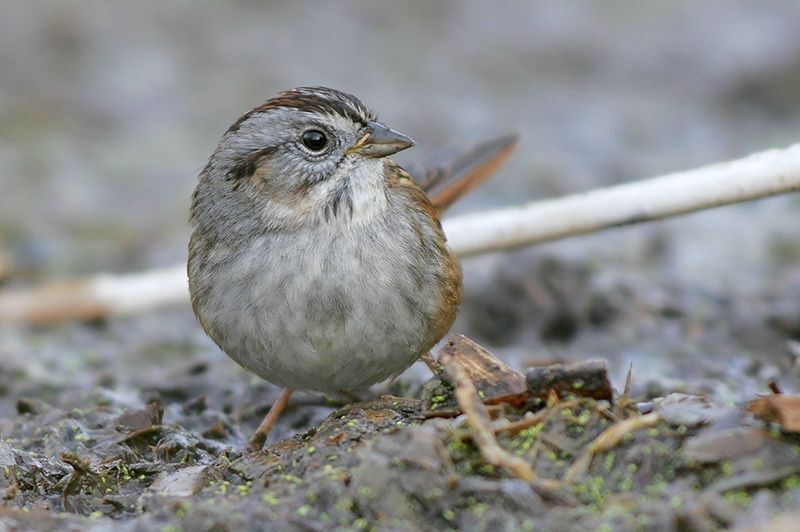
© Greg Lavaty, www.texastargetbirds.com
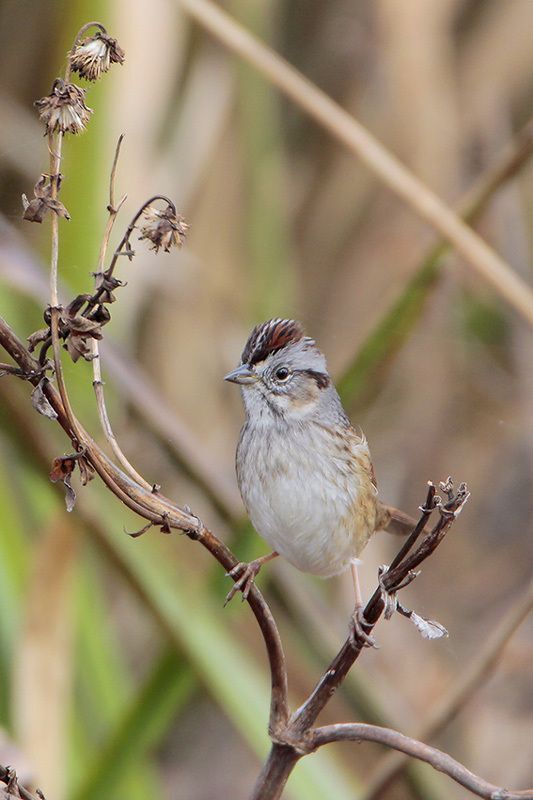
© Greg Lavaty, www.texastargetbirds.com
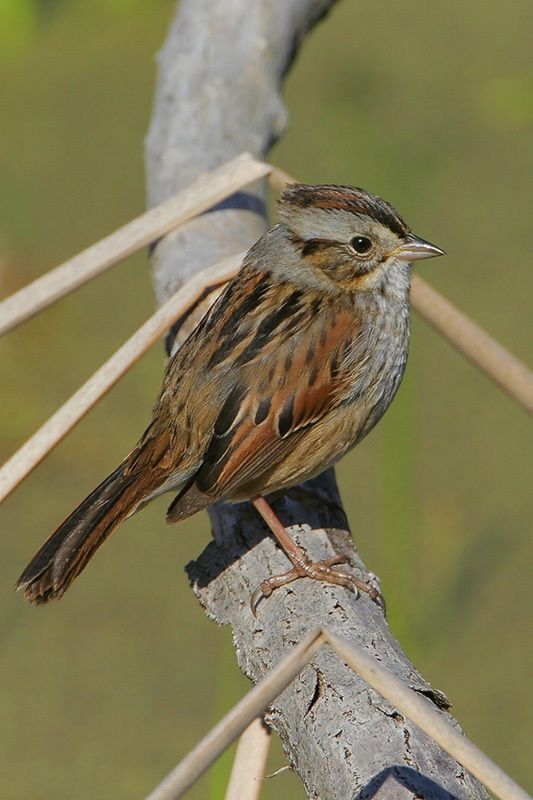
© Greg Lavaty, www.texastargetbirds.com
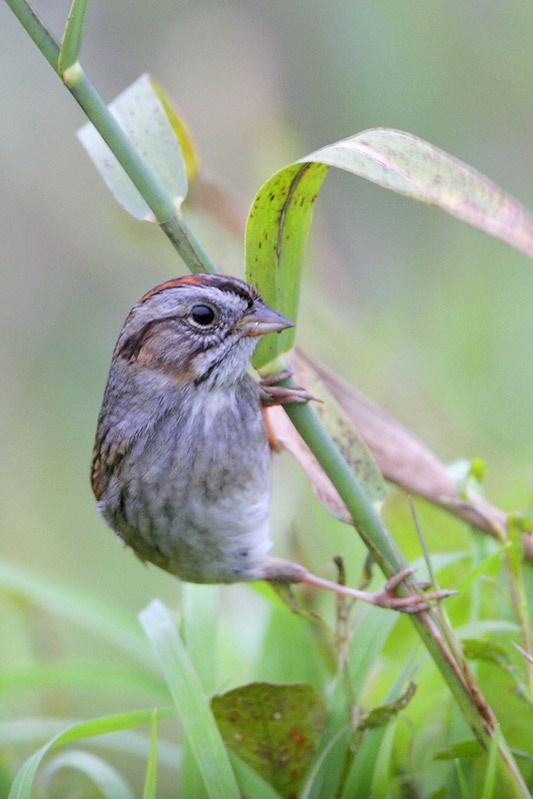
© Greg Lavaty, www.texastargetbirds.com

